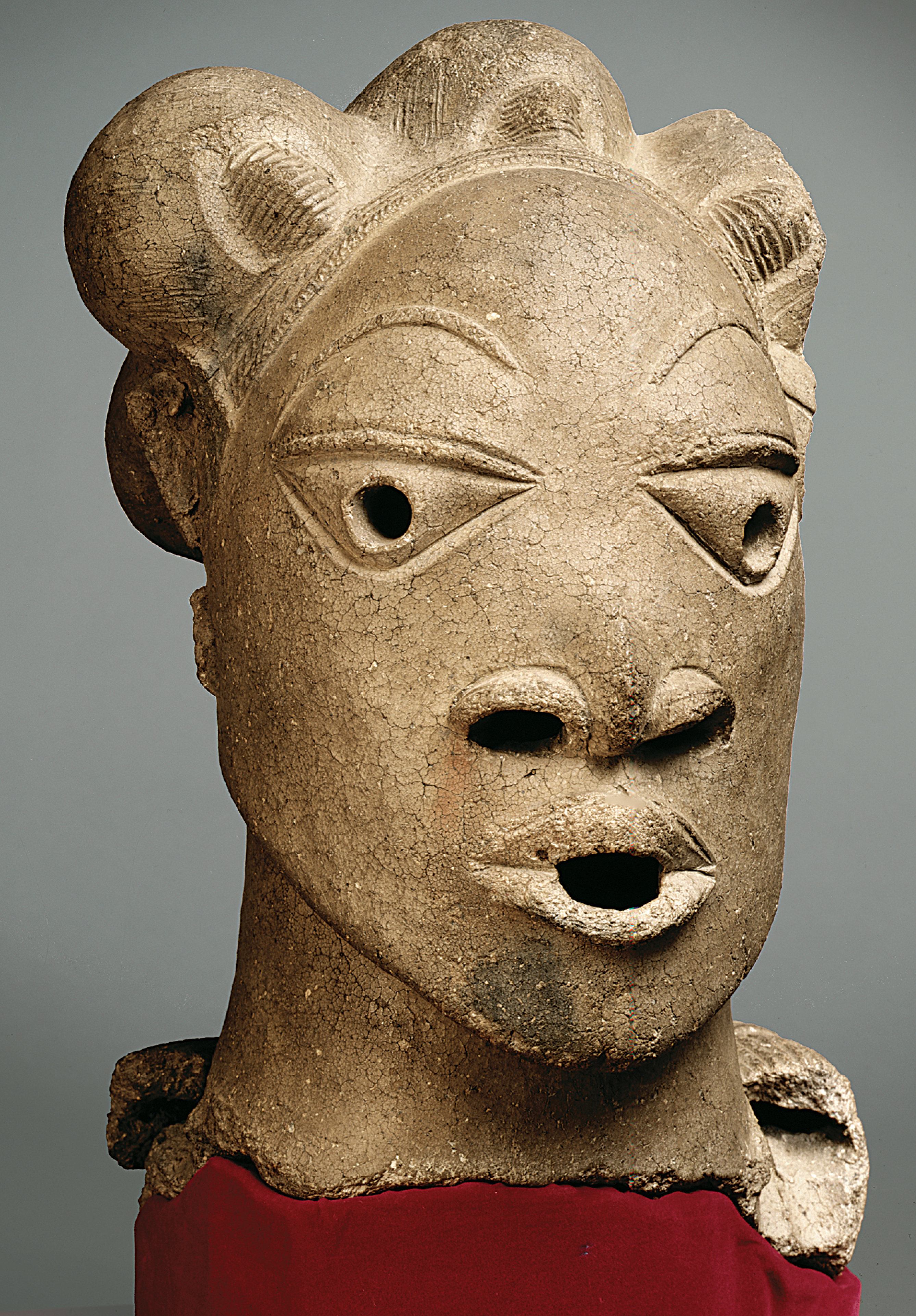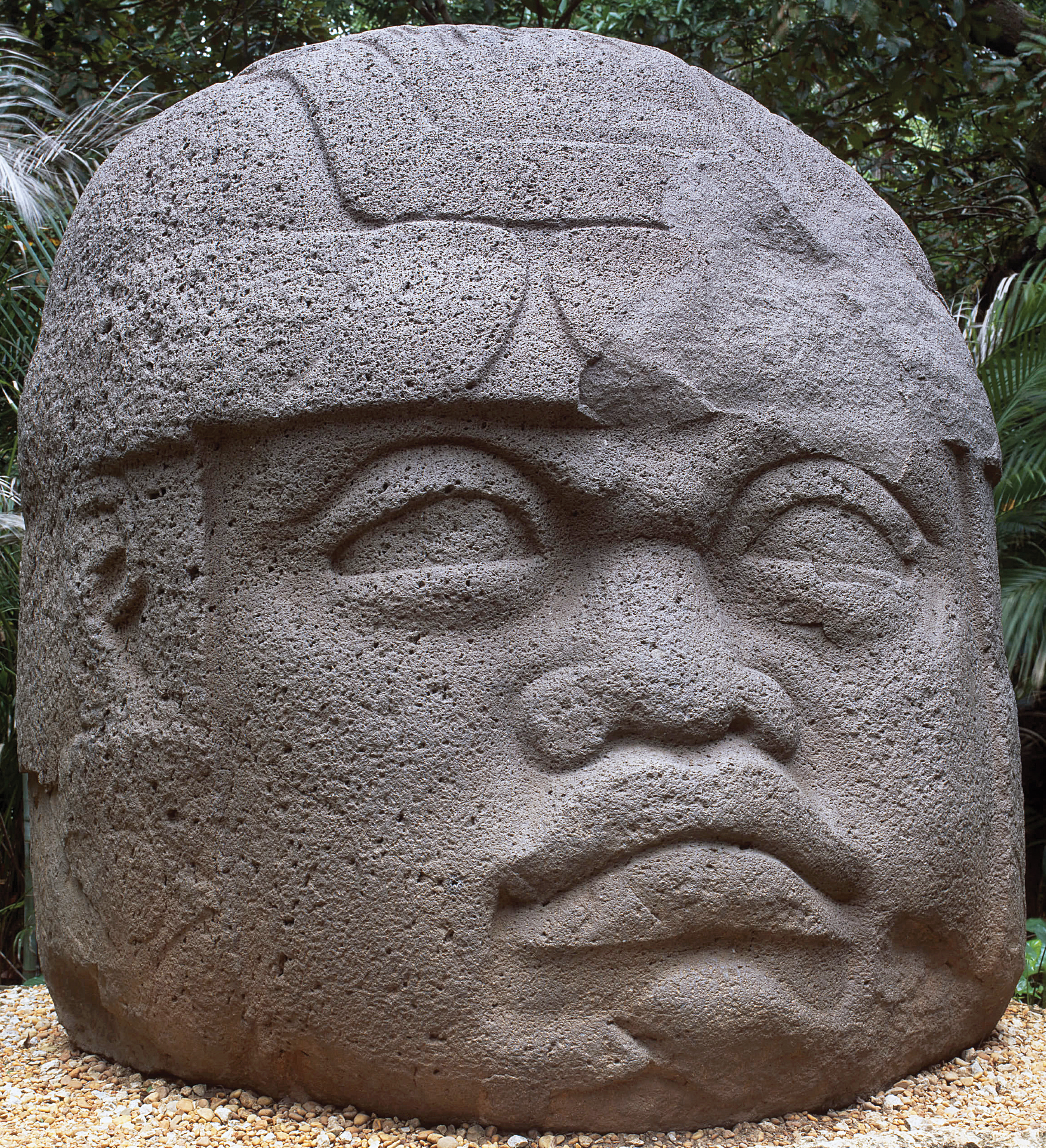College of Southern Nevada Nok Head & Colossal Head Comparison Paper
Description

Having Trouble Meeting Your Deadline?
Get your assignment on College of Southern Nevada Nok Head & Colossal Head Comparison Paper completed on time. avoid delay and – ORDER NOW
Nok head

Nok head: Terracotta, 1? 2 3/16? high Rafin Kura, Nigeria
Nok Culture
Your eBook, Kleiner Art Through the Ages, 15th edition, describes the image as follows. ” Scholars disagree on whether the Nok sites were unified politically or socially, but it is certain that the people of this region lived in villages, engaged in farming, and also knew how to mine and smelt iron ore. Hundreds of Nok-style human and animal heads, body parts, and figures have been found accidentally during modern tinmining operations or washed up after especially heavy storms, but unfortunately, the original context of none of the finds is known. All, however, can be dated broadly between 500 BCE and 200 CE. A representative Nok terracotta head, found at Rafin Kura, is a fragment of what was originally a full figure. Preserved fragments of other statues indicate that the Nok sculptors fashioned a variety of types, including standing, seated, and kneeling figures. As in the much later Benin plaque and African art in general, the heads are disproportionately large compared with the bodies. The head shown here has an expressive face with large triangular eyes beneath arched eyebrows, flaring nostrils, parted lips, and a coiffure divided into tufted sections. The pierced pupils, mouth, and ear holes are characteristic of Nok sculpture and served as air vents, helping to equalize the heating of the hollow clay head during the firing process. The incised grooves in the hair and other engraved details suggest that the sculptor carved some features of the head after removing the terracotta sculpture from the kiln. The function of the Nok terracottas is unclear, but the broken tube around the neck of the Rafin Kura figure may be a bead necklace, an indication that the person portrayed held an elevated position in Nok society. The gender of the Nok artists is also unknown, but because the primary ceramists and clay sculptors across the continent have traditionally been women, Nok women may have sculpted these heads as well.
Form
3-dimensional representation of the head of a woman; hollow, baked clay; larger than lifesize.
Style
Stylized naturalism; very little attention to bone structure, smooth face, flattish nose with emphatic large nostrils; mouth open as if speaking or singing forming an oval; prominent, delicately curved thin, attached eyebrows; large bulging eyes with hollow pupils; carefully dressed hair; short, thick neck. Idealized beauty.
Meaning
Most simply, the representation of a beautiful woman according to Nok standards of beauty, or power, or authority.
Context
The geographical area occupied by the Nok culture corresponds with the northwestern portion of the modern state of Nigeria. This head is just one of hundreds of examples, discovered at Nok sites. The presence of metal (iron) and metallurgy among the Nok is a sign of technological sophistication. It is possible that in addition to terracotta the Nok were also making art forms in metal, such as the later culture of the area, the Igbo-Ukwu, of the 9 th – 10 th Century CE, and the later Ife (Ile-Ife)
Colossal head

Colossal head: Basalt 9′ 4″ high
found in La Venta, Mexico
Olmec Culture
1200 BCE – 400 BCE
Your eBook, Kleiner Art Through the Ages, 15th edition, describes the image as follows. ” Four colossal basalt heads, weighing about 10 tons each and standing between 6 and 10 feet high, face out from the plaza. Archaeologists have discovered more than a dozen similar heads at San Lorenzo and Tres Zapotes. Almost as much of an achievement as the carving of these huge stones with stone tools was their transportation across the 60 miles of swampland from the nearest known basalt source, the Tuxtla Mountains. Although the identities of these colossi are uncertain, their individualized features and distinctive headgear and ear ornaments, as well as the later Maya practice of carving monumental ruler portraits, suggest that the Olmec heads portray rulers rather than gods. The sheer size of the heads and their intensity of expression evoke great power, whether mortal or divine.”
The Olmec Culture of the northern gulf-coast of Mexico is the oldest identified culture in Meso-America. Sometimes referred to as the mother culture for Meso-America, multiple features of the Olmec, such as a reverence for green jade stone, plazas and public ceremonial centers, pyramid temples, stone sculpture, the ball-game, murals, ceramics, blood sacrifice, and even possibly hieroglyphic writing, are found in all of the later cultures that followed the Olmec and developed in the larger geographic area of Mexico and Central America: Maya, Aztec, etc.
Form
Freestanding, large-scale, three-dimensional basalt sculpture of a human head represented from the chin up.
Style
The representation of the head is based on human proportions that have been subtly squared, rounded, and possibly flattened, as if the shape of the boulder from which it was carved determined the shape of the head. The distinctive way the face is represented, suggesting a heavily fleshed individual with a large somewhat downturned mouth, thick fleshy lips, a short, flat(ish) nose, and a wrinkled brow. The head seems to be wearing some kind of hat or helmet with incised and low-relief sculptural decorations. All signs point to male.
Meaning
There are multiple possible meanings. First the location, as one of four heads arranged facing outward from a central plaza, suggests it was part of an organized message. Several similar colossal heads in the same arrangement have been found at other Olmec sites. The iconography of the head seems might represent a ballplayer or a warrior wearing a helmet. It might also represent or symbolize a ruler; several heads = several rulers, perhaps a kind of geneology of rulership, and/or a protective function.
Context
The sculptural material, basalt, weighing on average 8 tons, was deliberately brought to the site from 60 miles away without the use of either a wheel or a large draught animal. The stone was worked with crude stone tools, as there is no metal in use at this time.
compare them on the four points: form, style, meaning, and context. 500 words. Hint: choose the similar medium: architecture with architecture, sculpture with sculpture, painting with painting etc. Discuss how they are both similar and yet different: what explains the differences. Why do artists/architects make the choices they do?
Please go to the Coursework button on the left-hand navigation menu to find the assignment instructions. Submit your PDF paper there.

